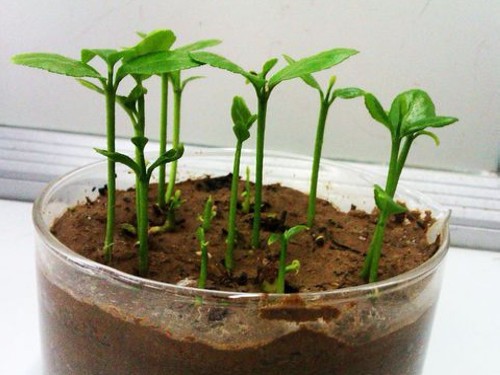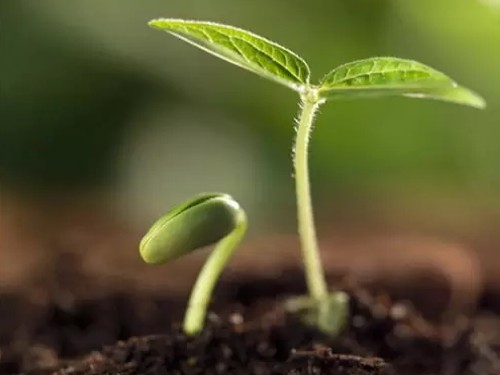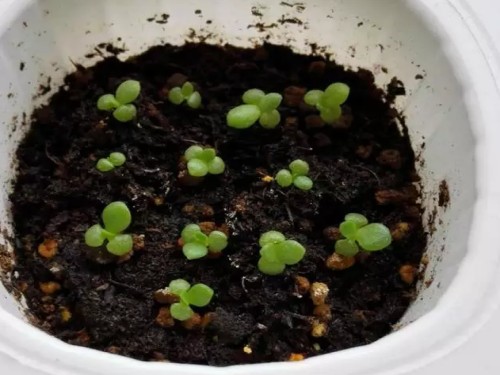Steps to sow seeds for flowers
The seed situation of different flowers is different, because the light preference is different, some small seeds need not be covered with soil, and some larger seeds need to be covered with soil. Generally speaking, small seeds generally like light, do not need to cover the soil, large seeds dislike light, the seeds should be covered with soil, cover the seeds, and it is best to put them in a cool, dark place before germination. For example, dwarfs dislike light, so the plastic film can be covered with black film.

An important factor to consider when sowing: the season. Different flowers and plants have different sowing seasons, generally spring and autumn, and some can only be autumn or spring.
The determination of sowing time is one of the important links in seedling raising. It can affect the growth period of seedlings, the adaptability of seedlings to the environment, the use of land, the maintenance and management measures of seedlings and so on. The suitable sowing time can promote the seeds to germinate earlier and improve the germination rate. And the seedling is neat, the plant growth is robust, the resistance is strong, save land and manpower, but also can cultivate high quality seedling products. The sowing time of garden plants should be determined according to the growth and development characteristics of various flowers, different environmental requirements of flowers, planned flower supply time, local environmental conditions and cultivation facilities. The advantages and disadvantages of sowing in each season are mainly as follows:
The time from sowing to seedling emergence in spring is short, which can reduce cultivation management; in spring, the soil is moist, unhardened, and the temperature is suitable, which is beneficial to seed germination and seedling emergence; after the seedlings are unearthed, the temperature increases gradually, which can avoid the harm of low temperature and frost and reduce the harm of seeds damaged by birds and insects.
Autumn sowing can make the seeds go through the dormant period and complete the budding stage before sowing, the seedlings are unearthed early and neatly in the next spring, prolong the growth period of seedlings, grow strong, have a high seedling growth rate, and increase cold resistance, which not only reduces the storage and budding treatment of seeds, but also slows down the contradiction of busy work and labor tension in spring. Due to the early emergence of autumn sowing, attention should be paid to prevent the harm of late frost.
1. Sowing density
Pot sowing can sow one or more seeds per hole according to the actual situation. Sowing in the seedling pot, the general variety can sow 1 Mel 2 thousand seeds per square meter. First, according to the area of the sowing pot, the seeds are evenly divided into several parts, one for each pot.
2. Sowing seeds
Larger seeds can be evenly sown on the substrate, or strip sowing, and smaller seeds, such as petunia and goldfish grass, can be mixed with clean fine sand before sowing. Very large seeds, such as sweet peas and cyclamen, can be sown on demand.
3. Sowing depth and covering soil
The depth of sowing is determined by the size of the seed and the light requirement of seed germination. In general, the sowing depth of seeds is 2-3 times the diameter of seeds. Some varieties, such as Petunia, Corydalis, Starry Flower, and four Seasons Begonia, need light to germinate, do not need to cover the substrate, and sow directly on the soil surface; some varieties need to be slightly covered, such as a string of red, goldfish, and calyx flowers; and some seeds should be slightly thicker and sown deeper, such as ornamental millet. The recommended covering material is coarse vermiculite, which has good water retention and air permeability.
4. Spray water
After sowing or covering, spray water again with a fine spray nozzle, watering thoroughly, so that the seeds are in full contact with the substrate and mulching material.
5. Coverage
Cover the sowing pot with glass, plastic film or plastic film to maintain air humidity and keep warm in winter. Summer can not cover the film, cover the film can not be sealed, both sides must be ventilated.
6. Shading
If sowing in summer, it must be shaded, otherwise the light is too strong and water evaporation is exuberant, which will affect the seed germination.
General seed sowing methods:
1. Choose loose and breathable soil (usually fine-grained peat or rotten leaf soil) into flowerpots or sowing plates.
3. pour the soil thoroughly and sprinkle the seeds evenly on the soil layer (you can also soak the pot after sowing).
4. Fine seeds (such as thyme petunia, chrysanthemum, begonia seeds, etc.) do not need to cover the soil, but pay attention to maintain soil moisture, spray water with a fine nozzle spray to moisturize, if there is a large flow of water, it is easy to wash away the seeds or wash them into the depths of the soil. For large seeds, the thickness of the cover soil should be 2-3 times of the seed size.
5. The optimum temperature for most seeds to germinate is 20-25 degrees Celsius. It should be noted that some seeds can only germinate at low temperatures, such as buttercup, swallows, most vanilla and seeds sown in autumn and winter should not be higher than 25 degrees Celsius. Sowing seeds in spring and summer should not be lower than 20 degrees Celsius. If you can't reach the temperature, use fresh-keeping film to raise the temperature and keep moisture at the same time, in summer. All seeds should be kept in a cool place, shade and rain, and pay attention to warmth and frost protection in winter. the seeds do not take root before they germinate and need artificial replenishment to maintain life. The soil should be kept moist but not waterlogged.
6. If covered with cling film, the flowerpot should be removed in time after seed germination, and the flowerpot should be moved to a place with scattered light to see light, and after seed germination, some liquid fertilizer, such as potassium dihydrogen phosphate, should not be too high when the concentration is about 200 times. Fertilizer should be applied according to the growth status of the plant when it grows up.
7. When the seed grows to 2-3 leaves, it can be transplanted, and when 5-6 leaves, it can be planted in time. Put a little mature organic fertilizer (home-made organic fertilizer) and slow-release granular fertilizer (such as compound fertilizer) in the flowerpot before planting.
Time: 2019-06-10 Click:
- Prev

Preparation of flower seeds before sowing
Family flowers should be sown in pots. It is best to use a flowerpot called seedling shallow as a container for pot seeding. It is a clay pot specially fired for flower seeding in pot kiln. The upper opening diameter is 30~32 cm, the pot height is only 8~10 cm, and the inner diameter of the bottom of the pot is similar to that of the upper opening.
- Next

How to manage landscape flower seeds after sowing
The reproduction of flowers is divided into sexual reproduction and asexual reproduction. Sexual reproduction is the reproduction of offspring by sowing seeds. Asexual reproduction, also known as vegetative reproduction, uses part of the plant's vegetative organs to grow into new plants. there are cutting, ramet, grafting and striping methods. Among them
Related
- Fuxing push coffee new agricultural production and marketing class: lack of small-scale processing plants
- Jujube rice field leisure farm deep ploughing Yilan for five years to create a space for organic food and play
- Nongyu Farm-A trial of organic papaya for brave women with advanced technology
- Four points for attention in the prevention and control of diseases and insect pests of edible fungi
- How to add nutrient solution to Edible Fungi
- Is there any good way to control edible fungus mites?
- Open Inoculation Technology of Edible Fungi
- Is there any clever way to use fertilizer for edible fungus in winter?
- What agents are used to kill the pathogens of edible fungi in the mushroom shed?
- Rapid drying of Edible Fungi

